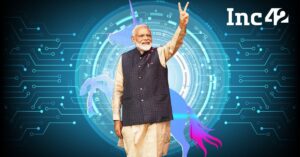B2B and B2C are traditional business models that are tried and tested strategies to build and scale a startup. However, the dynamics are shifting. With customers all over the world connected digitally, businesses are looking to connect better with the end-users of their product or service.
B2B2C and its attributes
This is where the hybrid B2B2C model comes in, wherein your business sells a product or service to another business and in the process, gains the customers from that business.
However, not all businesses that fit the above definition are B2B2C companies. Companies whose products are white-labelled by another business before being re-sold are not B2B2C. Neither are businesses that use channel partners to sell their products. At best, they are quasi-B2B2C.
What defines the B2B2C model is 1) if the product maker or service provider has access to the end consumer data and can use it, and 2) because your brand is constantly visible, the end consumers begin to recognise you with the purchase experience.
Swiggy and Dunzo are two brands that reflect these traits and hence, can be broadly bucketed under the B2B2C model. They have become so synonymous with the experience today that we use them as verbs.
Benefits of the B2B2C model
Investors are becoming increasingly attracted to the B2B2C model because it offers unique advantages over the B2B and B2C models. Let’s look at a few advantages –
Customer acquisition and growth
Restaurants have a large and often, loyal customer base. By partnering with these restaurants, Swiggy brings onto its platform both the restaurant’s existing customers and new customers. As it onboards new restaurants, more customers avail their services.
In addition, because of the better accessibility, a customer places multiple orders in a week and tries out new restaurants. Likewise, Dunzo reaching out to more stores and offering more services will get more users to use the app.
What excites investors is that both Dunzo and Swiggy do this with an asset-light model. Swiggy does not own/operate restaurants, and neither does Dunzo own pharmacies. They simply have to invest in connecting the sellers and the consumers.
Monetisation
While Dunzo doesn’t charge its non-partner merchants, it takes a commission from its partner stores for every task. Likewise, Swiggy takes a cut off the value of each order the restaurant receives. The end-users, in both cases, pay a delivery fee. This model is important because Dunzo and Swiggy can make enough from both without charging either party too much.
Additionally, Swiggy’s unit economics improves because it has a few other revenue streams –
Banner promotions: Restaurants pay Swiggy to promote and display their ads on the platform and receive greater visibility.
Priority listing: Swiggy charges a higher fee for restaurants that want to be displayed on priority on the user’s search list.
Subscription model delivery: Swiggy’s latest innovation in increasing its revenue is to offer limited or unlimited free deliveries for a monthly subscription fee.
Access to data
Today, with consumers having an abundance of choice, user experience has become a defining factor that drives sales.
In the process of facilitating a simpler user experience, Swiggy has also gained access to consumer data such as order details, delivery location, ordering patterns, food preferences, etc – all of which the restaurant has no access to.
Dunzo too has complete access to the tasks that the user runs. This data is used to better understand consumer behaviour, allowing them to personalise recommendations and run targeted marketing campaigns. Swiggy also leverages this data to improve the supply and the supply chain.
Customer ratings can be used to help improve food quality, ensure delivery speed, incentivise delivery agents, etc.
The challenges of being B2B2C
While the above advantages are driving this new-age business model, it also has its fair share of challenges. Businesses have to first onboard a large set of suppliers and maintain a strong and steady relationship with them. At the same time, they has to keep the end-users happy through great customer engagement and shorter delivery times.
Hyperlocal delivery is complex. For shorter delivery times, you need more delivery agents. And to attract and keep delivery agents, their earnings have to be incentivised. Doing this is neither cheap nor easy.
It is hard enough to build a product that one of the two – businesses or consumers like. It is even harder to build one that benefits both.
The rewards of cracking the B2B2C model are disproportionately high, which is why investors are lured by it. A business is able to scale and monetise quickly and provide a holistic customer experience – all this, while it remains asset-light (neither Swiggy nor Dunzo owns the restaurants/pharmacies).
The exponential growth of digitisation and ecommerce has blurred the boundaries between B2B and B2C business models into a converged B2B2C model.
Investors have taken note of Salesforce CEO Marc Benioff’s words – ”We really see every B2B company and every B2C company becoming a B2B2C company.”, and are already making the move.
(Disclaimer: The views and opinions expressed in this article are those of the author and do not necessarily reflect the views of YS.)









